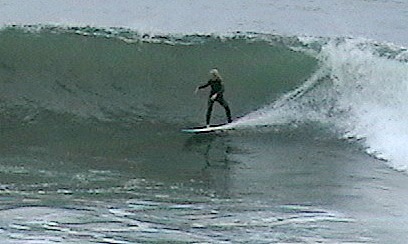Surfers usually begin by dreaming of carving up the waves and want to surf bigger waves. Three things are essential.
The Three Basics of Surfing Bigger Waves
Learning to surf bigger waves requires:
- Mastering the basics
- Practice
- Courage
Learning to master the basics often requires making the right first steps. In my surf lessons, I often get people who have tried on their own, attended surf camps, or haven’t surfed for a while. All three lend themselves to developing bad habits. Bad habits are detrimental as surfers get into waves with more speed and weight.
Beginners have to learn to paddle balanced, catch waves with good timing, and pop up in a perfect posture that would allow them to ride straight to the beach without falling off the board. This seems simple, but there is no advancing until this is mastered.
Secondly, it requires consistent practice to get the timing of breaking waves and maintain stamina. Surfing is all about paddling and when the paddling muscles are gone, so is the pop up. Catching real waves requires spit second timing and the timing gets lost with lack of practice.
Dave Kalama, a side kick of Laird Hamilton, said waves don’t increase in size but increments of fear. Every professional says that each time they stepped up a few feet in wave size they had fear. Waves get faster and heavier as they get bigger. Most advanced surfers know which waves to take, which waves to pass, and when to bail out. This requires practice and instinct that comes from practice.
Getting thrashed by big waves creates memories. You don’t want too many, but you can’t fear the experience. A program of stretching, weights, and aerobics prepares your body for the necessary strength and the unavoidable falls.*
For Surf Lessons in Oceanside, see the Home Page
The Perfect Start to Lose Weight and Get Fit
Free E-Book
You Have to Get Started to Find Your Happiness. Quick Start to Change your Lifestyle
See Surf Packages and PerfectBody.me meal plans.

